FEC Revenue Blueprint: All-Ages, Multi-Gen Indoor Playground Design
FEC Revenue Blueprint: All-Ages, Multi-Gen Indoor Playground Design
Family Entertainment Centers (FECs) have rapidly transformed. What used to strictly accommodate children has changed to a multi-generational entertainment complex where there are expectations to have everything tailored to toddlers, teenagers, adults, and even corporate groups. This shift is no longer optional for investors and venue operators, as it has become the core driver of profit growth, increased dwell time, and consistent yearly income. This is the purpose of this blog. Dreamland Playground will detail the foundational elements of All-Ages FEC Design to illustrate how this approach model maximizes profitability, user experience, and sustainability as well as return on investment for the business.
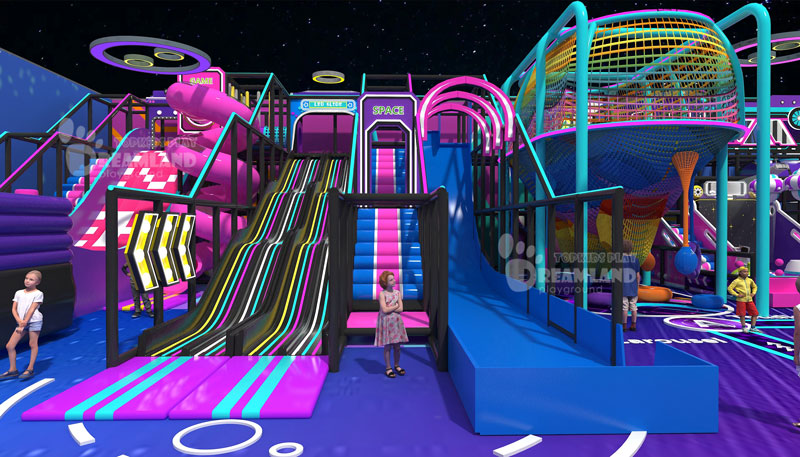
The Pain Point: Why Can’t Your FEC Just Focus on Kids Anymore?
The standard model of FECs, comprised of soft play zones, party rooms, and vibrant decor, was designed to attract children aged 3 to 10 years, and for a while, this worked. Children would bring their parents, parents would spend money, and weekends would garner the majority of revenue. However, with the current experience economy, the kids-only FEC model is commercially obsolete.
1. Limited Traffic and Seasonal Volatility
A venue for children alone will see busy peaks, predominantly holidays and weekends, and extreme troughs on weekdays. Your venue will experience a drop during the week as parents have no children to bring during the week. With the void of children, your venue will be empty.
2. Shorter Dwell Time Equals Lower ROI
When parents are supervising toddlers, they are not likely to stay for longer than 1-2 hours. Your venue is missing even more F&B, ticketing, and lounge revenue since there are no activities for adults or teens.
3. Modern Families Want Shared Experiences
Parents no longer want to passively supervise; they want to engage. Teens are looking for activities that are challenge-based. There are curriculum-aligned activities that schools require. Unique team-building activities are solicited by companies.
To keep operating, FECs need to transition away from a “Children's Center” and towards a “Multi-Generational Family Hub.” That is where All-Ages FEC Design and Dreamland Playground's expertise becomes a profitability engine for the coming years.
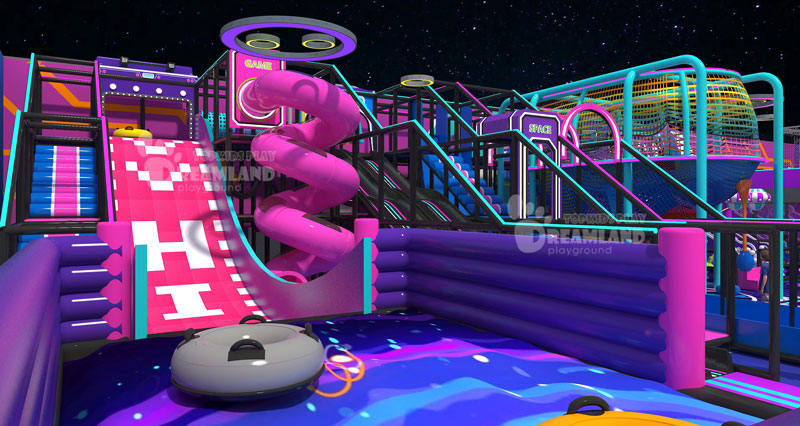
The Four-Dimensional Strategy for All-Ages FEC Design
There is a noticeable trend among Family Entertainment Centers (FECs) in attempting to redefine their business models and offerings for an all-ages audience.
Catering to all-ages customers is not merely a matter of providing activities for all ages. It requires a true revenue ecosystem strategy for all-ages audiences. Such a strategy is built on four demographic revenue pillars—families, teens, corporate groups, and educational institutions. Activating all four audiences simultaneously maximizes weekday traffic. Each customer group adds to the average spend promotion, while the FEC enjoys financial resilience.
2.1. Inclusivity: Catering to Families
Of all the customer groups, the foundational audience, and the group on which daily foot traffic is built, is families. Designing for families is ultimately a matter of comfort and inclusivity.
Goal: Consistency, Safety, and Secondary Spending
Strategy: Families expect their environment to be welcoming. Safety is a given priority.
Design Strategy:
- Because parents expect to be able to see their children at all times, the play areas should be designed with transparent barriers and wide open layouts to encourage sightlines.
- Although parents should not be isolated, their wait time should be converted to F&B spending.
- Increased time spent in the facility can be designed for with climate control, ergonomic seating, and stroller parking. These all contribute to the families staying longer and boost dwell time, ultimately increasing revenue.
Financial Effect:
The more time parents spend with us, the more they spend. An all-access model increases customer spending due to the addition of drinks, snacks, and the ability to upsell additional services.
2.2 Attracting Teens: The Demand for Challenge
Teens in Hyper-Engagement Segment
●FECs lose profit opportunities by not catering to teens. It’s best to focus on premium spending and high reclaim-visit frequency.
- Teens value and spend more on repeat visitation and shareable experiences.
- Design Examples
- Custom Ninja Courses: Adjustable levels and modules draw in teens for competition.
- Interactive Climbing Walls: Gamifying and adding AR to climbing retention and repeat visitation.
- High Ropes Adventures: Social and physical thrill packages are shareable and draw repeat visitation.
- Marketing Feed: Social marketing draws of ninja courses and climbing/rope courses + shareable moments trends on social.
- Predict Profitability: Teens during after-school and weekend peak periods and weak operational hours improve the profit/operations ratio.
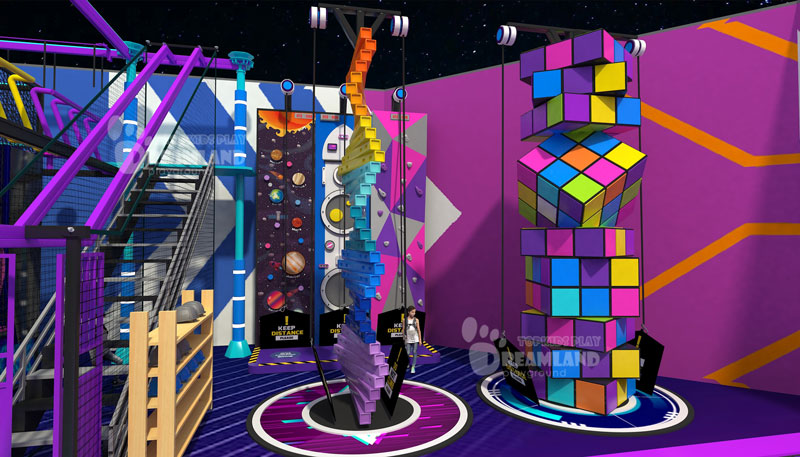
2.3 Capturing Corporate Groups: The High-Margin Revenue Stream
One of the sources of the biggest profit margins in the entire FEC industry is corporate bookings. Once the venue is properly designed, it can become the go-to place for leadership training, employee bonding, ice-breaker workshops, and professional celebrations.
Objecting to filling weekday evening gaps + unlocking premium group income
Corporate clients fix weekday evening struggles that traditional FECs face.
Design Strategy
- Turn challenge zones into team-building arenas: Incorporate components for memorable corporate experiences, such as ninja course competitions, relay races, and collaborative climbing challenges.
- Include nearby multi-purpose rooms: For workshops, award ceremonies, or strategy meetings, equip them with audiovisual systems, flexible seating, and catering support.
- Design structured Team Building Packages: For 2–4 hour programs, offer sponsorship by a coach for the challenges, catering, and breakout sessions.
- Corporate events produce: Profitable bookings and reduced traffic during off-peak times
- Income that is consistent and reliable: Contracts produce a consistent and predictable income. Just this one stream of revenue can greatly stabilize your operating budget.
2.4 Locking in Weekday Traffic with Educational Groups
School Field Trips are the fairest and most effective remedy for the underperformance seen during the weekday daytime hours. Field Trips provide a high volume of students and require minimal marketing efforts.
Objective: Consistent, reliable revenue stream during the weekday daytime. Schools traditionally book field trips M-F during the hours of 9 am-1 pm, which is the exact time most FECs have a vacancy.
Design Framework
Connect the equipment of the facility directly to the educational goals of the trip:
- Soft Play → gross motor skills development
- Climbing → coordination and physical fitness
- Ninja courses → perseverance, balance, and participatory activity
Develop programs for P.E. alignment with the field trip:
- Learning outcomes are a hit with the teachers.
- Assist with capacity and safety certifications:
- Schools rely on returning customers for a guarantee on safety and compliance with regulations.
Commercial Outcome:
- 1 school booking = 30-120 students
- Multiple bookings per week = guarantee baseline recurrent income
- Maximal Advertising ROI = Zero Advertising Cost
- This is the most effective method to eliminate weekday troughs.
Core Product Integration: Building the Universal Appeal
Designing for all ages is a balance all around with precision. From layout to flow to modularity of the equipment, you are able to determine how well your FEC caters to multiple audiences – families, teens, adults - simultaneously and efficiently.
Elasticity of Design: Modularity and Adjustable Difficulty
- Modern FECs must be flexible and futureproof.
- Adjustable Difficulty = A Larger Audience
- For attractions like Custom Ninja Courses, adjustable challenge elements allow:
- Children to enjoy easier routes
- Teens to challenge themselves
- Adults and corporate groups to test and compete with their skills
- This multiplies your revenue potential.
- Modular Design = Lower Long-Term Costs
Modular components allow:
- Quick change of theme
- Seasonal updates
- Competitive refreshes
- Without full replacement
- This is vital for sustaining repeat visits and long-term public interest.
Commercial Impact:
Elasticity increases ROI by reducing upgrade costs and widening your usable customer demographic.

The Art of Layout: Flow, Monitoring, and F&B Strategy
The floor plan is more than layout design–it is a profit strategy.
3.1 Strategic separation of High and Low Energy Zones
Keep toddler soft play at a distance from Ninja Courses and Climbing zones, but have a supervisory line of sight.
This provides:
- Safe movement
- Improved crowd control
- Increased comfort for families with mixed ages
3.2 Adults' Visibility and Sightlines
Parents should be able to monitor their children from their seats without having to walk back and forth.
- Smart seat placement = more dwell time = more spending.
3.3 Integrating Food and Beverage at Strategic Flow Points
Place the café where:
- There is a good sight of adult seating
- Foot traffic is consistently high
- A well-placed café can boost F&B sales 30–40%.
Commercial Impact: Optimized layout improves
- Customer comfort
- Flow
- Operational efficiency
- Overall secondary spending
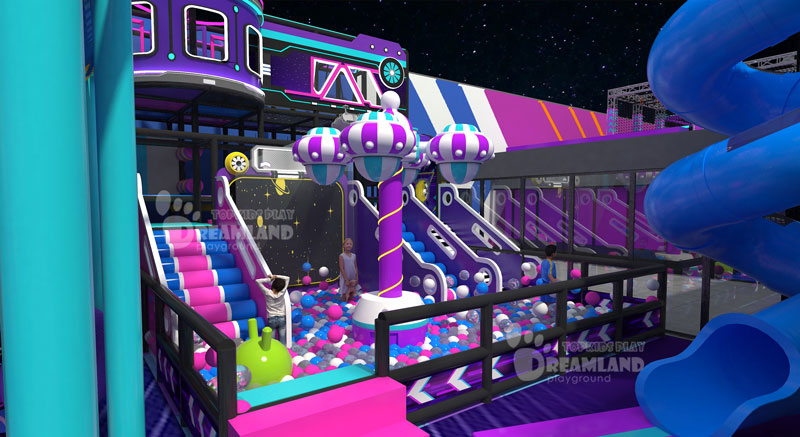
Measuring the ROI of Profitable All-Age Design
All-Age FEC is not just a design trend; it's a model of profitability. When done right, success is quantifiable.
4.1 Revenue Diversification and Risk Mitigation
In the entertainment sector, you cannot rely on a single audience, as it is too risky. All-Ages FEC designs minimize risk through the four most profitable revenue streams.
- Families who provide steady weekend and evening traffic.
- Teenagers who enjoy the challenge and competitive attractions.
- Corporate groups, which bring in high revenue during weekday evening bookings.
- Schools that provide steady weekday daytime traffic.
- This risk mitigation design protects your business from seasonal declines, school holidays, and downturns in the economy.
4.2. Increased Dwell Time and Repeat Visits
When multiple ages can either play together or separate, the visit tends to be longer.
- Increased Time On-Site Equals Increased Spending
- More snacks are purchased.
- More food orders from the café are placed.
- More attraction tickets are bought.
- More merchandise is sold.
- More visits are made in the future.
A single family tends to stay much longer. For example, a family that stays for three hours instead of one and a half hours tends to almost double their spending for that visit.
The activities provided tend to foster social bonding across generations, which leads to repeat visits from families for the experience, schools for the annual event, and corporate groups for new versions of their team-building activities.
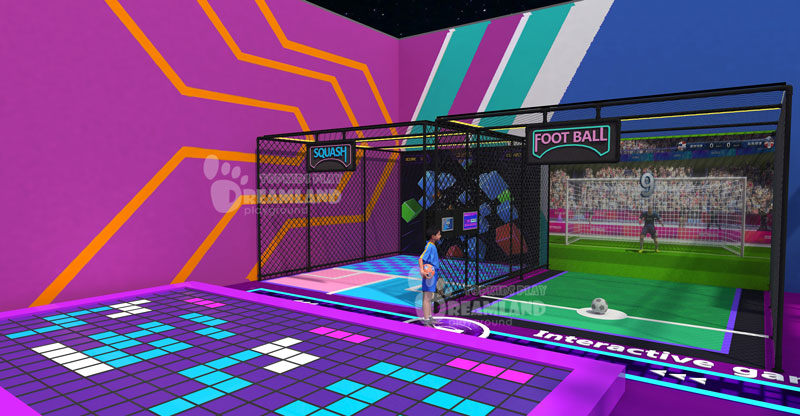
Conclusion
Today's leading FECs cater to customers across all age groups, including toddlers, teenagers, adults, corporate teams, and schools. The All-Ages FEC Design is the optimum model for profitability and sustainability, and is the best practice for the future.
Among all the global players, Dreamland Playground has the most expertise in All-Ages FEC Solutions. Turnkey FEC Design, Custom Ninja Courses, modular indoor playgrounds, and multi-generational venue strategies were all engineered for profitability and sustainability. Our team is equipped to construct high and sustainable revenue-generating assets for new and existing venues.
Are you set to see the maximum return on your FEC investment?
Let’s talk today about a long-term multi-generational FEC solution tailored for all ages, and for your continued success.
Frequently Asked Questions (FAQ)
1. Is the cost of designing an All-Ages FEC significantly higher than a kids-only FEC?
Not quite. All-Ages design only reallocates budgets instead of increasing them. Through thoughtful equipment selections, modular Ninja Courses, and multi-use spaces, expenses are kept low while revenue streams increase.
2. How do you ensure safety standards when integrating high-thrill attractions next to toddler zones?
Smart zoning and clear physical separation are key. Dreamland Playground employs tiered safety design: soft barriers, staggered flow, age-appropriate zones, and optimal visibility from staff and parents.
3. How can a playground attract corporate team-building clients?
By offering structured team challenges that utilize Ninja Courses, climbing walls, and other group activities, along with meeting and AV-equipped rooms, flexible booking packages and tiered pricing.
4. What is the most effective way to fill low-traffic weekday hours?
School field trips. They are a low-marketing investment with maximum repeatability, which provides a consistent high-volume weekday revenue.
5. Does adding adult attractions dilute the family-friendly atmosphere?
No, with proper zone separation and design flow, adult and teen attractions elevate the experience while still maintaining a child-friendly environment.






